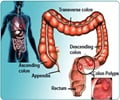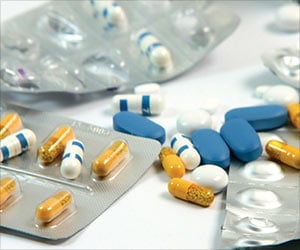Two studies has looked at the measurable impact of the use of aspirin and other maintenance therapies, and one demonstrates that lower doses of therapies may prove to be just as beneficial
The use of medicines to fight cardiovascular disease has been a primary focus of research in this area for the past several decades, as combinations of interventions and medicinal therapy have gradually begun to increase long-term survival rates.
Two studies has looked at the measurable impact of the use of aspirin and other maintenance therapies, and one demonstrates that lower doses of therapies may prove to be just as beneficial while also lowering side effects."Cardiovascular disease is the leading cause of death today, and the major focus of research is to find better ways to help these patients through prevention, immediate intervention and long-term treatment regimens," said Douglas P. Zipes, M.D., Distinguished Professor of the Indiana University School of Medicine. "As we continue to discover the benefits of these therapies, we expect to see continued and measurable improvements in overall survival and quality of life."
After patients with acute coronary syndromes (ACS, a group of symptoms related to acute ischemia, or chest pain related to arterial damage) undergo percutaneous coronary interventions (PCI, including stenting), a significant concern among cardiologists is the risk of major internal bleeding. Aspirin (ASA) acts as a blood thinner to prevent clotting complications, but high levels can cause potentially serious bleeding. While PCI trials have traditionally used high-dose ASA (more than 200 mg) in combination with other medicines to prevent thrombosis and ischemic events, a sub-analysis from a clinical trial presented by researchers at McMaster University in Hamilton, Ontario suggests that low-dose aspirin may be just as effective as high doses to prevent thrombosis while reducing the risk of major bleeding in patients who have undergone PCI.
As a sub-analysis of the PCI-CURE study, researchers compared the safety and efficacy of varying doses of aspirin: low (less than 100 mg), intermediate (101-199 mg) and high (more than 200 mg). A total of 2,658 patients with ACS undergoing PCI were divided according to the most commonly used dose, and each dose group was evaluated for event rates relating to cardiovascular (CV) death, MI (heart attack) or stroke as well as major bleeding.
The researchers found similar rates of CV death, MI or stroke in all of the aspirin dose groups at 30 days and 8 months. While the incidence of major bleeding was not significantly different between the groups at 30 days, the rate of major bleeding was noticeably reduced with low-dose aspirin after 8 months, an important factor in the practice of aspirin dosing for patients in this population.
"In this large observational analysis, low-dose ASA appeared to be just as effective as high-dose ASA in preventing recurrent cardiac events in ACS patients after PCI, while reducing the long-term risk of major bleeding," said Sanjit Jolly, of Hamilton Health Sciences and lead author of the trial. "These data are intriguing, since low-dose aspirin is most commonly prescribed in Europe, but in the United States, higher doses are most commonly used. Our data suggest that lower doses may be safer, but this finding needs confirmation in a dedicated randomized trial," said Shamir R. Mehta, M.D., Associate Professor of Medicine at McMaster University and study principal investigator.
Advertisement
To determine the actual impact of the increasing use of cardiovascular medicines, the research team used Medicare and pharmacy assistance programs records from 1995 through 2004 to identify nearly 22,000 patients who had been hospitalized due to a heart attack and survived more than 30 days after discharge. These patients were followed from the index date (30 days after discharge) until they died or until the end of the study period.
Advertisement
"Long-term prognosis in elderly patients with MI has improved considerably over time, and this study supports evidence that this can be attributed to the increasing use of cardiovascular medicines after discharge from MI," said Soko Setoguchi, of Brigham and Women's Hospital and lead author of the study. "As the rate of heart risks continues to increase among the general population, treatment regimens that include the use of cardiovascular medicines will have considerable benefits in overall long-term survival rates," said Dr. Setoguchi.
Source-Eurekalert
SRM











